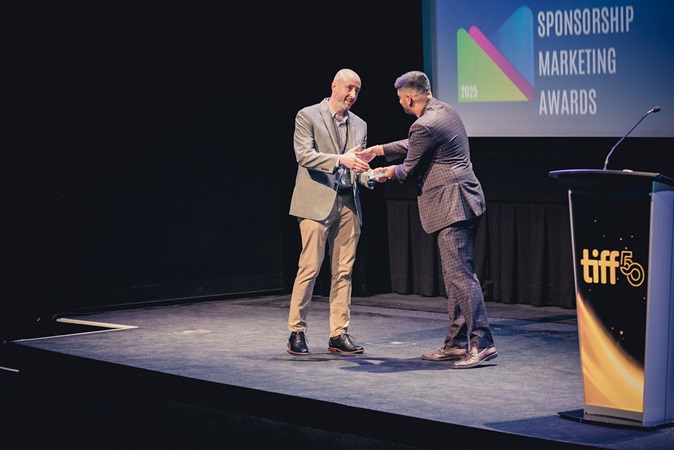Inside Toronto Public Library’s strategy for building brand trust
This is part of a Brand Council content series on “Balancing short-term and long-term strategies.” Read the introductory blog here and Part 1 here.
Marketing leaders know the tension well: balancing short-term demands with long-term brand building. It’s a challenge in any organization, but for Toronto Public Library (TPL), that balancing act plays out in the public eye, with funding decisions, political shifts, and community expectations constantly shaping the strategy.
We sat down with Linda Hazzan, Director of Communications, Programming and Customer Engagement at TPL, to explore how her team manages that balance, and how a strong, well-defined brand can become an organization’s greatest asset when the stakes are high.
Short-term vs. long-term: It’s all connected
Sasha: If short-term goals are a one and long-term goals are a 10, where would you place TPL’s focus?
Linda: Honestly? I’d say we sit right in the middle, around a five, but it’s never static. We’re constantly adjusting depending on what’s happening around us: politically, socially and economically.
TPL has a strong brand. We consistently see high satisfaction with our services, and there’s a lot of goodwill and understanding of our value. But there have been moments when that value has been questioned. When libraries are seen as outdated or “nice-to-have” rather than essential, we’ve had to push back and make the case that we are, in fact, a critical community service.
In those moments, our messaging focused on both the numbers and the nuance. Yes, we shared data: visits, circulation, program attendance. But we also highlighted the difference we make: through personal stories, testimonials, third-party voices and positive media coverage. That combination helped us show that libraries aren’t just busy; they’re vital. And cutting them would come at a real social cost.
In the past few years, we’ve been very fortunate to have a mayor and City Council who understand the value of public libraries. That’s given us more room to shift toward longer-term storytelling. We can talk about outcomes, not just outputs, showing how our services reduce social isolation, support economic recovery and strengthen community resilience. That’s a very different kind of conversation — one that allows us to connect the dots between our day-to-day work and the big-picture impact libraries have on the health of the city.
This became especially evident during the pandemic. Our immediate goal was clear: continue delivering essential services while keeping everyone safe. That meant doing things like keeping our Wi-Fi running 24/7 and extending its reach beyond our walls so people could connect from parking lots or nearby parks. We repurposed branches as food banks and turned our book distribution centre into a logistics hub to support that effort.
Even in crisis mode, we were acting on our core values, showing up as connectors and community builders when people needed it most.
The throughline in all of this is that short-term actions always ladder up to the long-term brand story. Whether we’re running a financial empowerment workshop, offering tech training, or hosting a Taylor Swift friendship bracelet event, everything ties back to our fundamental purpose: “Read, Learn, Create, and Connect.” That consistency is what keeps the brand strong, even when our tactical focus shifts.
Shifting the measurement mindset
Sasha: As you’ve been focusing on building the brand over the years, I imagine the way you measure success has evolved as well?
Linda: Absolutely. What’s really changed is how success gets measured.
It used to be about outputs, like how many books were borrowed, or how many people came through the doors. Those metrics are still important, of course, for us to understand how people are using us and what services are relevant and valued. But more importantly, it has to be about outcomes. Did someone find a job using our computers? Did we help reduce their isolation? That’s what matters most, and so of course, it’s a much more powerful story.
That shift from activity to impact also changes how the library fits into the bigger picture of city-building.
We tie our strategic priorities directly to the City’s priorities. We contribute to community outcomes, from economic development to public health to social inclusion. The City understands that the library can be a strategic partner in upstream solutions to downstream problems. In other words, if you invest in libraries, you help mitigate more costly social and economic problems down the road.
This kind of alignment doesn’t just build the library’s case for funding, but also positions TPL as a critical partner in shaping the future of the city itself. That’s long-term brand building.
When brand becomes your lifeline
Sasha: What’s striking about TPL’s story is how a strong brand becomes a survival tool during crises. Can you share a few examples of how you managed this?
Linda: Here are two good examples that come to mind:
- Standing by our commitment to intellectual freedom
At a time when public pressure challenged our commitment to free expression, cancelling certain bookings or programs would have been the easier PR move. But that would have gone against one of our core values, intellectual freedom: the right to access ideas, even controversial ones.
We realized that many people didn't understand how central intellectual freedom is to our identity and values as a library. So, in addition to all the work we did to strengthen our policies and overall communications, we also put more work into education and advocacy, which included open dialogue with staff and community members, and focusing this work as part of our strategic plan.
Today, the policy itself can still spark protests and criticism, but the public has a much clearer understanding that this is part of what it means to be a public library. - Responding to a cyber attack
When TPL was hit by a crippling cyber attack, transparency continued to be our brand currency. We couldn’t restore service right away, but we could be honest, visible and transparent. And that built trust, not eroded it.
In fact, post-attack customer satisfaction scores were higher than before — proof that how you handle adversity defines your brand just as much as your everyday work.
Making the case for long-term investment
Sasha: Sometimes, it’s financial pressures that are pushing for quick returns. How do you advocate for brand-building investments when the results might not be seen right away?
Linda: It starts with a shared understanding that brand isn’t fluff. It’s foundational. Over time, we’ve built that mindset across the organization, and now, brand plays a central role in how we plan and prioritize. When we kick off our budget process, one of the first questions is: What’s the story we need to tell about our value, and how are we going to build it over time? That’s a huge shift.
We also ground it in evidence. We show how every dollar invested in library infrastructure goes further because we already have trusted spaces, teams and programs in place. And we support it with social and economic impact data. Brand building helps people, including city leaders, understand the deeper value of libraries, and why continued investment matters.
CMO and CFO: Building the bridge
Sasha: We often see a push-and-pull between marketing and finance. Do you see it as a CMO vs. CFO dynamic, or is it possible to build alignment?
Linda: I can understand how the CMO vs. CFO tension is real in many organizations, but at TPL, there really isn’t a “versus.” It’s always been about building a partnership rather than working in opposition. The only way to do that is to show up with data-backed narratives that prove why brand matters. Not just in a marketing sense, but in terms of the financial health of the organization.
I’m at the table for every key budget meeting to help contribute. When marketing has a seat in those rooms, it’s easier for leadership to see the full value of the brand.
Advice for marketers facing internal pushback
Sasha: What advice would you give to marketers trying to convince leadership to invest in long-term brand building?
Linda: Three things:
- Brand work doesn’t live in a vacuum. It should be clearly connected to your organization’s strategic priorities. Communicate it as a way to advance shared goals, not as a separate initiative.
- Play the long game. This isn’t one pitch and done. It’s about showing up every year, evolving the story, and proving the value over time.
- Live the brand internally. If your staff don’t see the connection between brand and their daily work, neither will your leadership team. Make brand part of onboarding, internal culture and even the budget process.
Why it matters more than ever
TPL’s story is a masterclass in staying true to who you are while proving your worth in dollars and cents.
At a time when public institutions and private brands alike are under pressure to prove their relevance, this is a reminder that the strongest brands aren’t just what you say. They’re what you do when the pressure is on.
See here for the next piece, exploring brand building in the era of instant gratification.



































